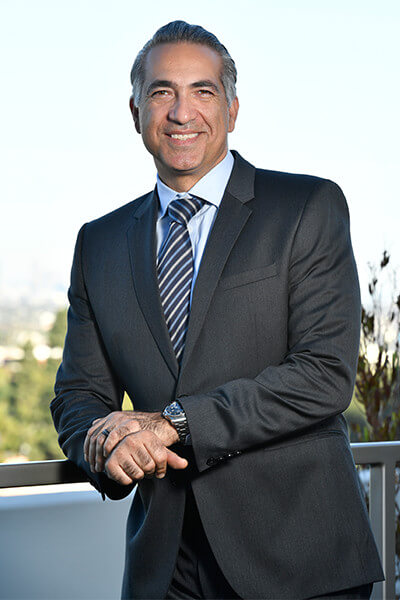By Michael H. Rosenstein, Esq.
Sally Tanner (born in 1926) represented California’s 60th District in the California State Assembly from 1979 to 1992. Her legislative career encompassed environmental issues, consumer protection issues, and issues relating to product safety. By the time she joined California’s State Assembly, our lemon law, the Song-Beverly Act, had already been in place for nearly a decade. Nonetheless, Tanner was the author of an expansion of California’s lemon law, which now carries her name, The Tanner Consumer Protection Act (the “Tanner Act”).
In 1980, California Assemblywoman Sally Tanner decided to clarify and expand the Song-Beverly Act by proposing a specific law, which defined what constituted a “reasonable number of attempts” for new motor vehicles. Because automobiles were the primary source of complaints from consumers and the second most expensive purchase for consumers, Assemblywoman Tanner felt that it was necessary to add some teeth to legal protections afforded consumers. The bill proposed that a consumer could invoke a “legal presumption” that the automobile manufacturer had been legally given a reasonable of attempts to repair a nonconformity if (1) the same nonconformity had been subject to repairs by the manufacturer or its agents four or more times, or (2) the new motor vehicle had been out of service by reason of repair for a cumulative total of 20 days or more.
Manufacturers strongly objected to the Assemblywoman Tanner’s lemon law and lobbied hard against the proposal. The automobile manufacturers – led by Ford, General Motors, and Chrysler – lobbied in favor of their internal dispute resolution process (such as the Better Business Bureau (“BBB”) Autoline program), which they had created in response to the passage of the Song-Beverly Act a decade earlier. The manufacturers framed the purpose and benefits of their dispute resolution processes in terms of legitimacy, efficiency, informality, and customer satisfaction as opposed to consumer protection. In fact, in spite of the automakers’ claims, customers receiving full restitution in these programs remained rare.
Civil Code § 1793.22, the Tanner Act, was enacted in 1982, but with significant changes from the original proposal by Assemblywoman Tanner. In order to pass the bill, the California Legislature deferred to and adopted some of the logic of manufacturers’ dispute resolution procedures. Under the new lemon law, a consumer was entitled to a “legal presumption” that the manufacturer received a “reasonable number of attempts” if (1) the same nonconformity had been subject to repair four or more times within the first 12,000 miles or 12 months from purchase, or (2) had been out of service by reason of repair for a cumulative total of more than 30 (not 20) calendar days within the first 12,000 miles or 12 months from purchase.
The most significant changes, however, concerned the codification of manufacturers’ dispute resolution processes into the Lemon Law. Specifically, the legal presumption as to what constituted a “reasonable number of attempts” -the main purpose of 1793.22–could not be asserted in court unless the consumer first resorted to the existing “qualified third-party dispute resolution process” to the extent that a manufacturer maintained one (Civil Code § 1793.22(c)). Thus, legal protections afforded under the Lemon Law were contingent upon using manufacturers’ third-party dispute resolution processes if they existed.
Because of the deference allowed to the manufacturer funded dispute resolution processes, many consumer groups complained to Assemblywoman Tanner and the California Department of Consumer Affairs in the mid-1980s. Complaints included allegations that (1) arbitrators often had no legal training and no training in the Lemon Law, and often were not even provided copies of the applicable warranty law, (2) many manufacturer processes did not allow consumers oral presentation at hearings while dealers and manufacturer representatives often participated in the decision-making process (Ford and Chrysler) or staffed these panels with their own employees, (3) manufacturer proceedings were taking much longer than 40 days as required by FTC guidelines, and (4) arbitrators relied on expert testimony from mechanics supplied by manufacturers to evaluate automotive defects. Moreover, decisions in favor of consumers often resulted merely in another repair attempt for manufacturers. It seems, in spite of Assemblywoman Tanner’s best efforts, the automakers had managed to make 1793.22(c) suit their interests more than the consumers’. Since that time, the Tanner Act has been revised multiple times.
Under the current version of the Tanner Act, it must be presumed that a reasonable number of attempts have been made to conform a new motor vehicle to the applicable express warranties if, within 18 months from delivery to the buyer or 18,000 miles on the odometer of the vehicle, whichever occurs first, either
- the same nonconformity results in a condition that is likely to cause death or serious bodily injury if the vehicle is driven and the nonconformity has been subject to repair two or more times by the manufacturer or its agents, and the buyer or lessee has at least once directly notified the manufacturer of the need for the repair of the nonconformity;
- the same nonconformity has been subject to repair four or more times by the manufacturer or its agents and the buyer or lessee has at least once directly notified the manufacturer of the need for the repair of the nonconformity; or
- the vehicle is out of service by reason of repair of nonconformities by the manufacturer or its agents for a cumulative total of more than 30 calendar days since delivery of the vehicle to the buyer.
However, there remain limitations as to when a consumer may take advantage of the Tanner Act’s presumptions. If the manufacturer participates in a qualified third-party dispute resolution process and meets certain disclosure requirements, the consumer may not assert presumption until first participating in the qualified third-party dispute resolution process. (1793.22(c)).
In short, while the Tanner Act ads certain strong consumer protections, it also hamstrings consumers’ rights by forcing them (in certain cases) to first use the manufacturer-funded third-party resolution processes.
Both consumers and attorneys alike can be confused by the Song-Beverly Act and Tanner Act’s overlapping provisions. Meanwhile, whether or not a consumer should utilize an available third-party resolution process requires careful balancing of strategic options. Whether you are an attorney with a tough case or a consumer with a problematic vehicle, if you need assistance understanding and applying California’s lemon laws, please feel free to call the pros at CCA: (833) LEMON-FIRM.

